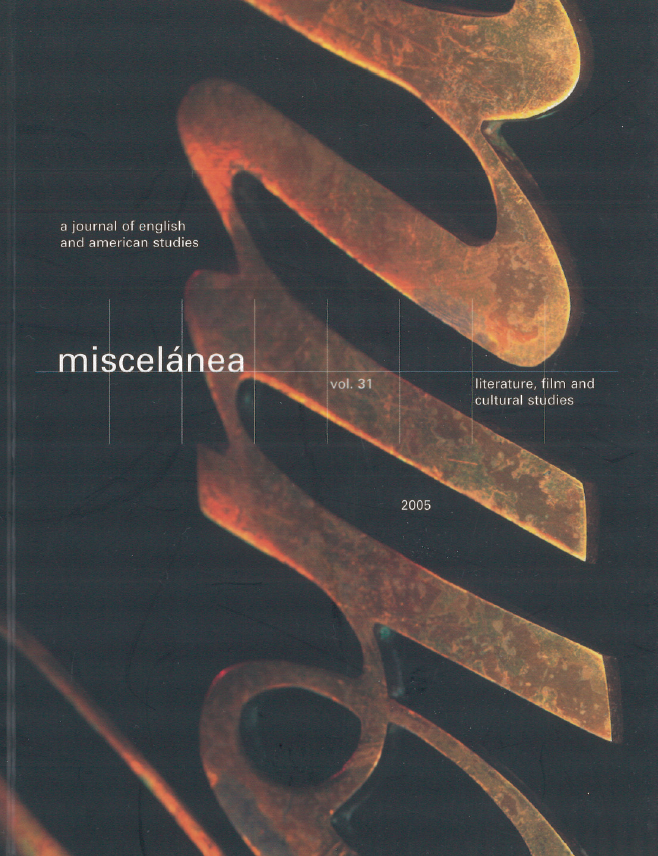Transferencia y contexto lingüístico en el proceso de aprendizaje de las estructuras negativas en inglés
DOI:
https://doi.org/10.26754/ojs_misc/mj.200510381Palabras clave:
transferencia, adquisición de una segunda lengua, contexto lingüísticoResumen
Este estudio examina dos áreas relacionadas con la teoría de la transferencia lingüística en la adquisición de L2 (Lado 1957; Odlin 1989): el contexto en el que tiene lugar la adquisición y el papel de la estrategia de aprendizaje que se denomina evitación. Para ello se comparó el desarrollo de la adquisición del sistema de negación en inglés por parte de estudiantes españoles de EFL con los hallazgos de Cancino et al. (1978) mediante el uso de un sistema de medida basado en la Hipótesis Diferencial de Marcación de Eckman (1985). Nuestros resultados muestran que los diferentes contextos en los que se produjo la adquisición conducen a diferentes usos de la transferencia y a diferentes secuencias en las etapas adquisitivas por las que pasan los alumnos. La evitación también parece ser una estrategia que debe tenerse muy en cuenta en cualquier evaluación del papel de la transferencia.
Descargas
Citas
ALONSO VÁZQUEZ, María Cristina. 2005. “Avoidance as a learning strategy”. Estudios Ingleses de la Universidad Complutense, 13: 67-84.
ALPTEKIN, Cem. 1981. “Sociopsychological and pedagogic considerations in L2 acquisition”. TESOL Quarterly, 15: 275-284.
BABEAR, Saleh I. 1988. An Investigation of the Avoidance Behaviour in Adult Second Language Learners. Ph. D. Thesis. Indiana University.
BUTTERWORTH, Guy A. and Evelyn M. HATCH. 1978. “A Spanish-speaking adolescent’s acquisition of English syntax”. In Hatch, E. M. (ed.).: 231-245.
CANCINO, Herlinda, Ellen J. ROSANSKY and John H. SCHUMANN. 1978. “The acquisition of English negatives and interrogatives by native Spanish speakers”. In Hatch, E. M. (ed.).: 207-230.
CLEMENT, Richard, Zoltán DÖRNYEI, and K. A. NOELS. 1994. “Motivation, self-confidence and group cohesion in the foreign language classroom”. Language Learning, 44: 417-448.
DIPIETRO, Robert. 1971. Language structures in contrast. Rowley, Mass.: Newbury House.
DÖRNYEI, Zoltán and Peter SKEHAN. 2003. “Individual Differences in L2 Learning”. In Doughty, C. J. and M. H. Long. (eds.).: 589-630.
DOUGHTY, Catherine J. and Michael H. LONG. (eds.). 2003. The Handbook of Second Language Acquisition. Oxford: Blackwell.
DUSKOVÁ, Libuse. 1969. “On sources of errors in foreign language learning”. International Review of Applied Linguistics, 7: 11-36.
ECKMAN, Fred. 1985. “The Markedness Differential Hypothesis: Theory and Application”. In Wheatley, Barbara. (ed.). Current Approaches to Second Language Acquisition. Proceedings of the 1984 University of Wisconsin-Madison Linguistics Symposium. Bloomington, Id.: Indiana University Linguistics Club: 3-21.
ELLIS, Rod. 1994. The Study of Second Language Acquisition. Oxford. Oxford U. P.
— 1997. SLA Research and Language Teaching. Oxford: Oxford U. P.
FRIES, Charles C. 1945. Teaching and learning English as a foreign language. Ann Arbor: University of Michigan Press.
GARDNER, Robert C. 1985. Social Psychology and Second Language Learning: The Role of Attitudes and Motivation. London: Edward Arnold.
GARDNER, Robert C. and Paul F. TREMBLAY. 1994. “On motivation, research agendas, and theoretical frameworks”. Modern Language Journal, 78: 359-368.
GARDNER, Robert C., Paul F. TREMBLAY and Anne-Marie MASGORET. 1997. “Towards a full model of second language learning: an empirical investigation”. Modern Language Journal, 81-344-362.
GASS, Susan M. and Larry SELINKER. (eds.). 1983. Language Transfer in Language Learning. Rowley, Mass.: Newbury House.
— 1992. Language Transfer in Language Learning. Revised edition. Amsterdam: John Benjamins.
GIBBONS, John. 1985. “The silent period: an examination”. Language Learning, 35: 255-67.
GUNDEL, Jeanette K. and Elaine E. TARONE. 1983. “Language transfer and the acquisition of pronominal anaphora”. In Gass, S. M. and L. Selinker. (eds.).: 281-296.
JARVIS, Scott and Terence ODLIN. 2000. “Morphological type, Spatial Reference and Language Transfer”. Studies in Second Language Acquisition, 22: 535-556.
HATCH, Evelyn M. (ed.). Second Language Acquisition: A Book of Readings. Rowley, Mass: Newbury House.
HYLTENSTAM, Kenneth. 1987. “Markedness, language universals, language typology, and second language acquisition”. In Pfaff, Carol. (ed.). First and second language acquisition process. Cambridge, Mass.: Newbury House: 55-78.
KELLERMAN, Eric. 1977. “Towards a characterisation of the strategy of transfer in second language learning”. Interlanguage Studies Bulletin, 2: 58-145.
KRASHEN, Stephen D. 1982. Principles and Practice in Second Language Acquisition. Oxford: Pergamon.
LADO, Robert. 1957. Linguistics across cultures. Ann Arbor, University of Michigan Press.
LARSEN-FREEMAN, Diane and Michael H. LONG. 1991. An Introduction to Second Language Research. London: Longman.
LUKMANI, Y. 1972. “Motivation to learn and language proficiency”. Language Learning, 22: 261-273.
NEFF, JoAnne, Juana M. LICERAS and Lourdes DÍAZ. 1997. A Parametric Perspective of EFL Acquisition in Institutional Contexts. Madrid: Universidad Complutense de Madrid.
ODLIN, Terence. 1989. Language transfer: Cross-linguistic influence in language learning. New York: Cambridge U. P.
ODLIN, Terence. 2003. “Cross-Linguistic Influence”. In Doughty, C. J. and M. H. Long. (eds.).: 436-486.
ROBINSON, Peter. 2003. “Attention and Memory during SLA”. In Doughty, C. J. and M. H. Long. (eds.).: 631-678.
RUTHERFORD, William E. 1983. “Language Typology and language transfer”. In Gass, S. M. and L. Selinker. (eds.).: 358-370.
RUTHERFORD, William E. (ed.). 1984. Language universals and second language acquisition. Amsterdan: John Benjamins.
SAVILLE-TROIKE, Muriel. 1988. “Private speech: evidence for second language learning strategies during the silent period”. Journal of Child Language, 15: 567-90.
SCHUMANN, John H. 1979. “The Acquisition of English negation by speakers of Spanish: a review of the literature”. In Andersen, R. (ed.). The Acquisition and Use of Spanish and English as First and Second Languages. Washington DC: TESOL: 3-32.
— 1986. “Research on the acculturation model for second language acquisition”. Journal of Multilingual and Multicultural Development, 7: 379:392.
SELINKER, Larry. 1972. “Interlanguage”. International Review of Applied Linguistics, 10: 209-231.
SELINKER, Larry. 1992. Rediscovering Interlanguge. London: Longman.
SPOLSKY, Bernard. 1969. “Attitudinal aspects of second language learning”. Language Learning, 19: 271-285.
WEINREICH, Uriel. 1953. Languages in Contact. The Hague: Mouton.
ZOBL, Helmut. 1983. “Markedness and the projection problem”. Language Learning, 33: 293-313.
ZOBL, H. 1986. “Word order typology, lexical government and the prediction of multiple, graded effects in L2 word order”. Language Learning, 36: 159-183.
Descargas
Publicado
Cómo citar
Número
Sección
Licencia
Derechos de autor 2005 María Cristina Alonso Vázquez

Esta obra está bajo una licencia internacional Creative Commons Atribución-NoComercial 4.0.


